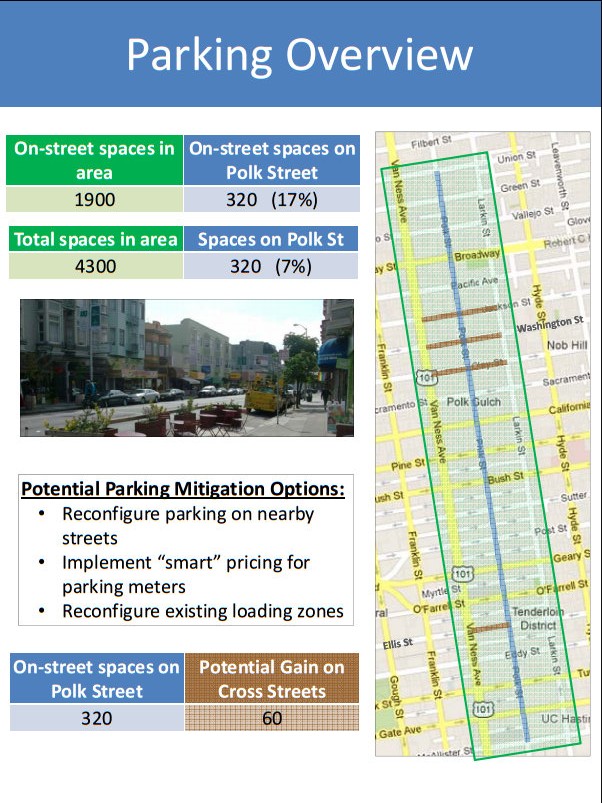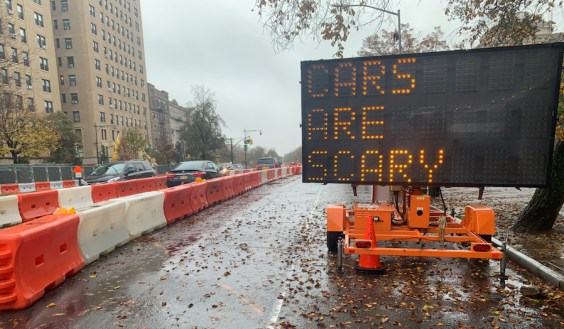A new entity that calls itself the "Save Polk Street Coalition" has come out against the developing plan to improve safety for people walking and biking on Polk Street because it would entail removing some parking spaces.
The group's website, which doesn't identify any of the businesses or residents it claims to represent, decrees: "STOP the radical agenda of the SFMTA." The sky-is-falling rhetoric continues:
Street parking is vital to Polk St. businesses. If you eat, live, work or shop along Polk Street this WILL affect you! If you want the restaurants, shops and services on Polk Street to survive make your voice heard. Save Polk Street from this misguided experiment!
First, let's clear this up: The notion that car parking is what brings customers to shop in walkable San Francisco neighborhoods has been debunked time and time again. Customer intercept surveys on Columbus Avenue found that just 14 percent of people arrived by car, and those people tended to spend less than people who arrived by other means. Pedestrianization projects like the proliferation of parklets and temporary bans on parking on Stockton Street in Chinatown have drawn more people to streets while subtracting parking.
To boost foot traffic and make the street a more inviting destination, re-purposing public space from automobile storage to improve conditions for walking and biking is a solid strategy. And by making it easier to get to Polk without a car, fewer visitors would need to occupy a parking space in the first place.

Still, it must be pointed out that the number of parking spaces which these not-in-my-backyard types are so worked up over is an exceedingly small amount of parking along the Polk corridor. The area has a huge parking supply, and the SFMTA's project would only put a tiny dent in the number of spaces. Of the 4,300 parking spaces within a block of the Polk project area, Polk's on-street parking makes up just 7 percent, according to the SFMTA. Even counting only on-street parking spaces within the area, Polk's share is still only 17 percent.
The SFMTA's conceptual proposals -- which are based on public input from community planning meetings -- would only remove some of that 7 percent. In fact, contrary to the opponents' claim that the agency is "planning to remove 20 blocks of street parking," most of the proposals still include car parking.
The benefits, meanwhile, would be protected bike lanes that all ages would feel comfortable riding on, vibrant public spaces that invite people to stay, and a safer street for everyone.
The "coalition" claims that it "welcome[s] customers to the area regardless of how they arrive, but know[s] that many people come by car. Walk, bike, drive, or MUNI - the diversity of travel modes reflect the diversity of our community!" As if driving will be impossible after a fraction of 7 percent of the area's parking supply is removed.
As for welcoming people who walk or bike, the group opposes even a trial project that would take place on just a few blocks and last only a few weeks, according to the SF Chronicle. The only thing these parking-obsessed opponents have to fear, it seems, is that the trial will be successful enough to warrant a permanent change.
There's hardly a more "radical" agenda than one which defines "saving Polk Street" as preserving infinitesimal amounts of storage for private automobiles at the expense of a vision for a more livable street that's based on input from the community.






